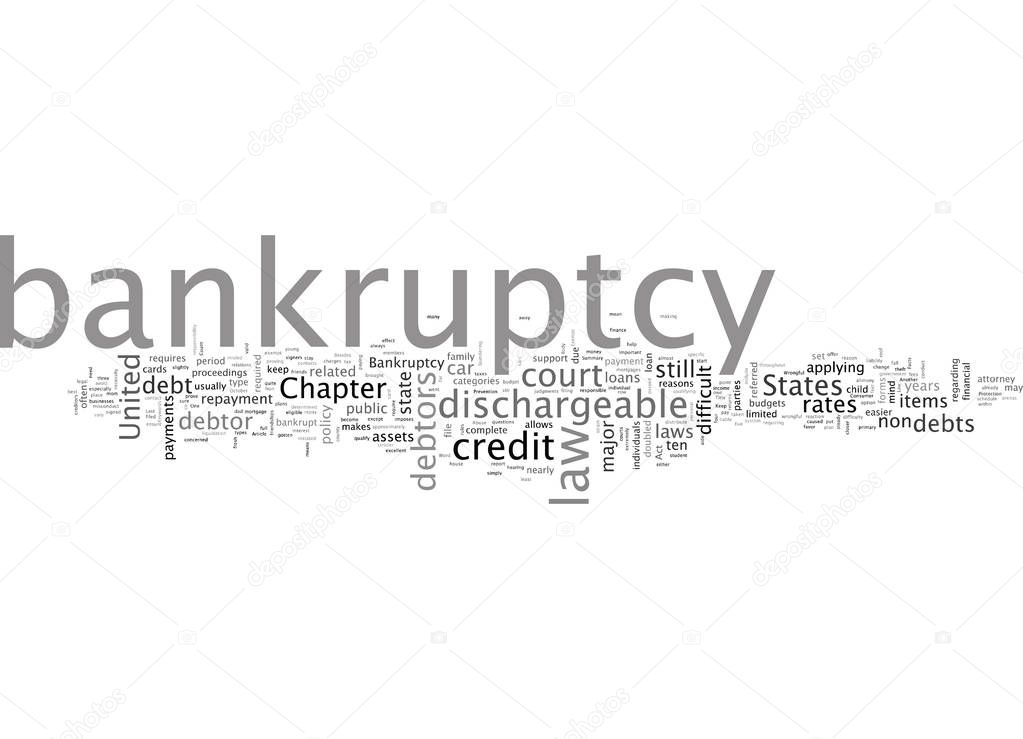Facts About Bankruptcy - Why Many Cases Filing Bankruptcy Are Dismissed
Facts About Bankruptcy - Why Many Cases Filing Bankruptcy Are Dismissed
Facts about bankruptcy are important and necessary for anyone who wants to know more about the process. Bankruptcy is simply a process through which individuals or other commercial entities who can't pay debts owed to creditors can seek temporary relief from some or all of these debts. In many jurisdictions, bankruptcy is legally imposed by a federal court order, typically initiated by the debtors. However, the law varies among the different states. The laws governing bankruptcy in the U.S.A. are similar to those found in the U.K.

The facts about bankruptcy are as wide-ranging as the laws that govern the process. If you are faced with a debt that cannot be paid, you should consider consulting a qualified bankruptcy attorney. This professional can help you determine if filing for bankruptcy is your best option. In Chapter Seven bankruptcy, a trustee or an evaluator will oversee and administer the distribution of the liquidated assets to pay off the debts.
The facts about bankruptcy vary according to state jurisdiction. In California, there is a common misconception that the trustee must wait a certain amount of time before distributing the wealth. As a result, individuals worry about how much time they have in which to repay their debts. While California law does require that the trustee to give notice to the individual that he or she has until the end of the calendar year to pay the debt, many find this out too late. There is also a common myth that filing bankruptcy automatically voids the remaining debt. This is not true: If it is shown that the debt could have been paid without assistance, then the bankruptcy process may be discharged.
Some individuals believe that they cannot discharge their debts through bankruptcy because they did not make a proper consumer proposal. Consumer proposals are designed to explain how the debt was accrued and explain to a borrower how it can be paid. Some states have more specific rules about what is required in a consumer proposal. However, the most important thing that a creditor needs to do is to file the proper paperwork with the courts and make a proposal that explains the debt, why it cannot be collected, and how it will be paid.
One of the biggest misconceptions about bankruptcy revolves around student loans. Because so many assume that student loans are exempt, there is often a second set of borrowers who assume they do not need to make any payment on their loans during bankruptcy. Some of these people end up in dire circumstances, once the lender begins pursuing collection efforts. These debts become available to the government through what is called the Federal Family Education Loan Program (FFELP). A borrower should understand that the debts are discharged by bankruptcy and are therefore not protected by federal law, but they may be able to be garnished.
Many people do not want to face the stigma attached to filing bankruptcy because of their past. This is not true. People do face a stigma when filing for bankruptcy and usually do not want to go through the process again. In some cases, they end up hiring a lawyer who helps them avoid the negative aftermath of filing for bankruptcy and they may even pay a portion of their debts off with an installment agreement.
One of the most common bankruptcy myths involves the one spouse filing chapter seven or one spouse chapter 13. This myth says that a borrower can file one income tax form and then have their debt forgiven by filing another form for another income tax form. The problem is that in most cases a second form must be filed in order to reduce the amount of money owed, not to excuse the borrower from paying anything. Filing a joint return is also considered an acceptable method of filing for bankruptcy, but it is important to remember that a borrower cannot use this as an excuse for why they owe the IRS money.
One of the biggest reasons why so many cases filing bankruptcy are discharged during the actual filing process is because the filer has misrepresented their financial situation. The individual may have told them own story to help get credit, they may have stated their assets were sold or they may have stated their income was much higher than it actually was. In many cases filing bankruptcy requires proving you cannot afford your debts and that the only way to do so is to file false information. It is important to remember that the best time to settle your debts is right after the case is filed.